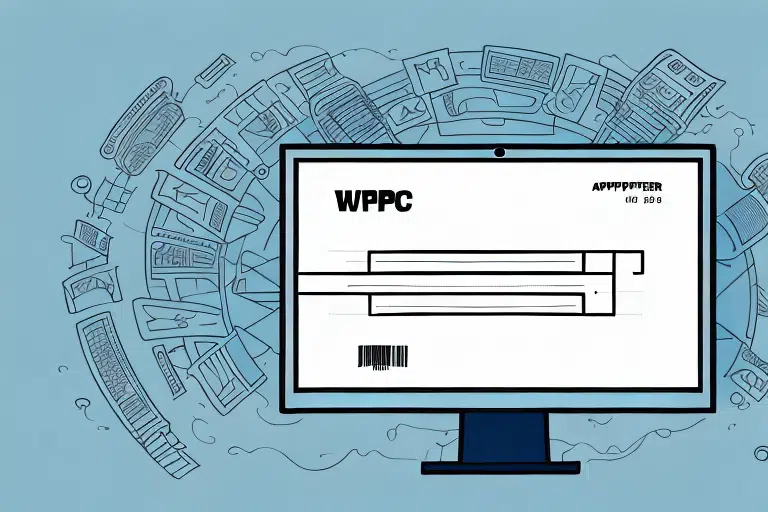Troubleshooting Authentication Issues with UPS WorldShip Invoices
Invoicing is a critical component of any business operation, and the UPS WorldShip invoicing system is a widely used solution. However, authentication issues can emerge when attempting to use the WorldShip invoicing system, leading to significant disruptions to your business. This article explores the authentication process for WorldShip invoices and provides comprehensive strategies to troubleshoot and prevent these issues.
Understanding the UPS WorldShip Invoicing Authentication Process
The authentication process for UPS WorldShip invoicing involves providing necessary credentials to validate the user’s identity. Typically, this includes a UPS account number and a Forex PIN. Accurate entry of these credentials is essential to prevent authentication failures.
Depending on the user's location and account type, additional security measures such as security questions or one-time passwords may be required. Regularly updating your authentication credentials is recommended to enhance account security. You can update your credentials by logging into the UPS website and navigating to the account settings section.
According to a 2023 UPS report, maintaining up-to-date security protocols can reduce authentication-related issues by up to 30%, underscoring the importance of regular credential management.
Common Authentication Issues with UPS WorldShip Invoices
Authentication issues with UPS WorldShip invoicing are not uncommon. Some of the most prevalent problems include:
- Incorrect Account Number: Mistakes in entering the UPS account number can lead to authentication failures.
- Forex PIN Errors: Errors in the Forex PIN can prevent successful login attempts.
- Expired Credentials: Outdated credentials may no longer be valid, causing access issues.
- ISP Blockages: Internet Service Providers may sometimes block connections to UPS servers, resulting in authentication failures.
- Outdated Software: Using an outdated version of WorldShip may lead to compatibility issues with current security protocols.
Identifying the root cause of these issues is critical before initiating troubleshooting steps.
Identifying Authentication Issues in UPS WorldShip Invoicing
The first step in troubleshooting authentication issues is to confirm that the credentials entered match the information provided by UPS. If there is any uncertainty regarding the accuracy of your credentials, contact the UPS customer service team for assistance.
Additionally, ensure that your WorldShip software is up-to-date. An outdated version may not support the latest security protocols, leading to authentication problems. Regularly updating your software can mitigate this risk.
Network settings and firewall configurations should also be reviewed to ensure they are not obstructing the WorldShip application's access to the internet. According to a 2022 cybersecurity survey, 25% of authentication failures were due to network-related issues.
Troubleshooting Steps for Authentication Errors
If you encounter authentication errors, follow these steps to resolve the issue:
- Verify Credentials: Double-check your UPS account number and Forex PIN for accuracy.
- Clear Browser Data: Sometimes, cached data can interfere with authentication. Clear your browser’s cache and cookies.
- Update Software: Ensure that you are using the latest version of WorldShip.
- Check Internet Connection: A stable and strong internet connection is essential for successful authentication.
- Disable Browser Extensions: Certain extensions or add-ons may disrupt the authentication process. Temporarily disable them to see if the issue persists.
- Restart Your Computer: A simple restart can often resolve unexpected issues.
If these steps do not resolve the problem, contact UPS customer support for further assistance.
Collaborating with UPS Support to Resolve Authentication Issues
When troubleshooting authentication issues proves unsuccessful, reaching out to the UPS customer support team is the next best step. They possess the expertise to diagnose and resolve complex issues efficiently. When contacting support, be prepared to provide:
- Your UPS account number
- Invoice number (if applicable)
- Detailed descriptions of the error messages received
- Steps you have already taken to troubleshoot the issue
Having this information readily available can expedite the resolution process.
Preventing Future Authentication Errors with UPS WorldShip Invoices
Preventative measures can significantly reduce the occurrence of authentication issues. Here are some strategies:
- Regular Credential Updates: Change your credentials periodically to enhance security and reduce the risk of unauthorized access.
- Maintain Software Updates: Keep your WorldShip software updated to ensure compatibility with the latest security protocols.
- Secure Internet Connection: Use a stable and secure internet connection to avoid interruptions during the authentication process.
- Enable Two-Factor Authentication (2FA): Adding an extra layer of security can prevent unauthorized access and reduce authentication failures.
Implementing these measures aligns with best practices recommended by cybersecurity experts to maintain system integrity and reliability.
Best Practices for Handling UPS WorldShip Authentication Issues
Effective management of authentication issues involves a systematic approach:
- Systematic Troubleshooting: Identify and address issues step-by-step to avoid overlooking potential causes.
- Documentation: Keep a detailed record of any errors and the steps taken to resolve them. This information can be invaluable when consulting with support teams.
- Security Measures: Ensure that your login credentials are stored securely and are not easily accessible to unauthorized individuals.
- Regular Training: Educate your team on proper credential management and security best practices to minimize human error.
Adhering to these best practices enhances the efficiency of resolving authentication issues and ensures the smooth operation of your invoicing processes.
Top Reasons for Authentication Failures in UPS WorldShip
Understanding the underlying causes of authentication failures can aid in quicker resolution. Common reasons include:
- Incorrect Credentials: The most frequent cause, often due to typos or forgotten information.
- Outdated Software: Incompatibility with current security protocols can prevent successful authentication.
- System Downtime: Temporary outages or maintenance on UPS servers can disrupt the authentication process.
- Browser Incompatibility: Using unsupported browsers can lead to issues with the authentication interface.
- Security Lockouts: Multiple failed login attempts may trigger security measures that lock the account.
Addressing these issues proactively can help maintain continuous access to the UPS WorldShip invoicing system.
Streamlining the UPS WorldShip Invoicing Authentication Process
To enhance the efficiency of the authentication process, consider the following tips:
- Maintain Accurate Records: Keep an updated and secure record of all login information and related credentials.
- Utilize Maintenance Tools: Employ tools that assist in regular system maintenance and updates to ensure all components are running optimally.
- Enable Automated Updates: Configure your software to automatically update, reducing the risk of using outdated versions.
- Implement Two-Factor Authentication: Enhance security by requiring a second form of verification, such as a mobile app or email code.
By incorporating these strategies, you can significantly reduce the likelihood of encountering authentication issues and ensure a smoother invoicing experience with UPS WorldShip.
Conclusion
Troubleshooting authentication issues within the UPS WorldShip invoicing system requires a methodical approach. By understanding the authentication process, identifying common issues, and implementing preventative measures, businesses can minimize disruptions and maintain efficient operations. Always ensure that your software is up-to-date, your credentials are secure, and do not hesitate to seek assistance from UPS customer support when necessary. Adopting these best practices will lead to a more secure and reliable invoicing system.






















